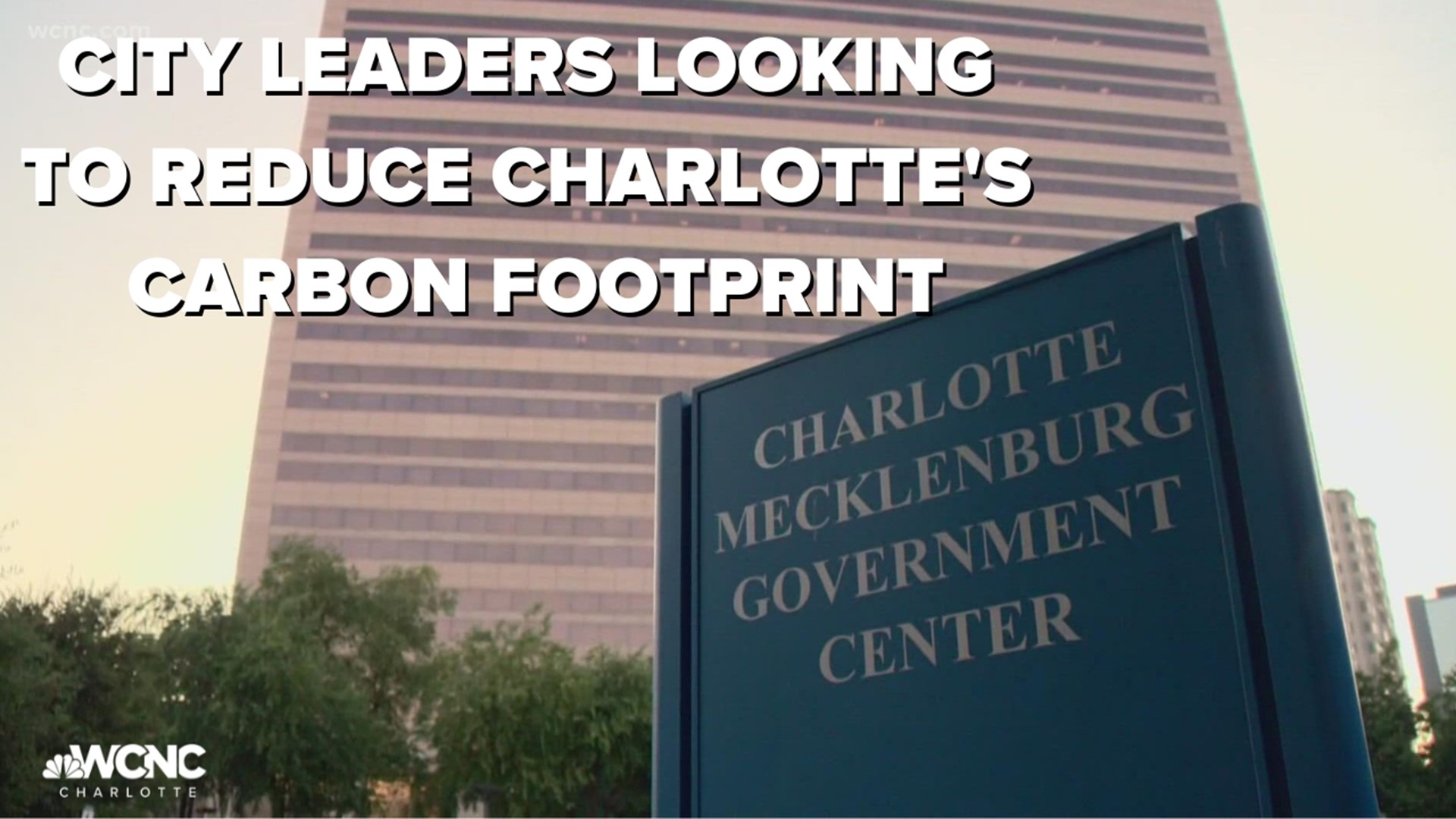CHARLOTTE, N.C. — The city of Charlotte adopted the strategic energy action plan back in 2018 with a focus on reducing carbon emissions both at the city level and community-wide.
Sarah Hazel is the Chief Sustainability Officer for charlotte.
“It really comes back to how to create a city that is healthy, equitable, and a place where people can breathe clean air. And we can think about future generations and be really proud of what we built and the way that we've built it,” said Hazel.
Charlotte is on a path to reducing its carbon footprint.
“We’re transitioning to a zero-carbon fleet and a zero carbon in our buildings, reducing our energy usage, investing in solar and supporting renewable energy,” she said.
The queen city’s goal is to have all its fleet and facilities fueled by 100 percent zero-carbon sources by 2030.
“We have 63 electric vehicles, currently in service and so that ranges from our electric buses, we have trucks, sedans,” she continued. “We do have well over 100 that are being planned for and are already ordered. However, because of some of the supply chain delays that we're seeing with vehicles both electric and non-electric right now those are not coming as fast as we’d hope.”
It includes the city’s first electric street sweeper.
“Charlotte has really bold goals about creating a walkable and bikeable city. And so we're continuing to expand our bike infrastructure. And as such, you need a way to clean that bike infrastructure.”
The city owns and operates 105 electric vehicle charging stations and 25 more will be added to the government center’s parking deck. It’s a 1.15 million dollar investment.
Hazel said increasing access to charging stations is just as important.
“Recently, the city adopted the unified development ordinance, with EV charging requirements. So now, some multifamily residential, hotels, and parking structures will be required to put in a level of electric vehicle readiness, so that they can put in more EV chargers.”
There are simple lifestyle changes she says people can make to help.
“From changing out your light bulbs to LED to turning off the lights when you leave a room to thinking about how you're using water,” she explained. “And if that's not something you can consider, look at how you can take more trips by public transportation, biking, walking, using different kinds of micro-mobility options, all of those things every day can make a really big difference.”
The community-wide goal is to become a low-carbon city by 2050.
“It’s certainly not an easy goal to achieve but it's absolutely necessary. And it is, it is a place where I think cities have the opportunity to really lead the charge.”

